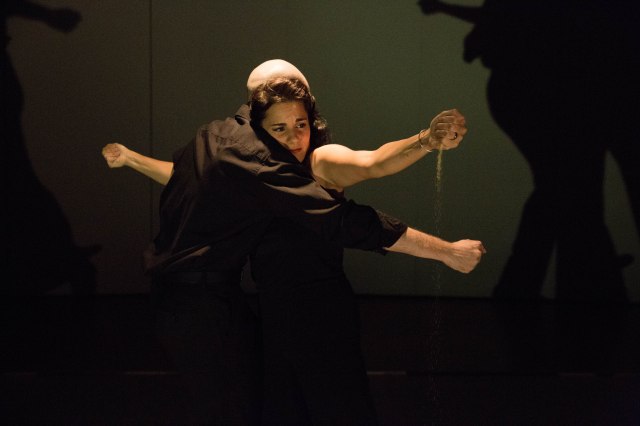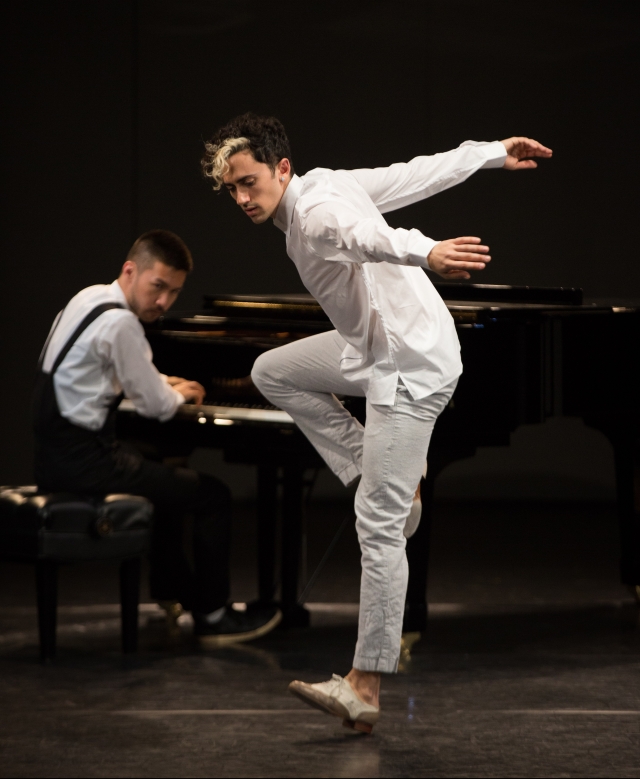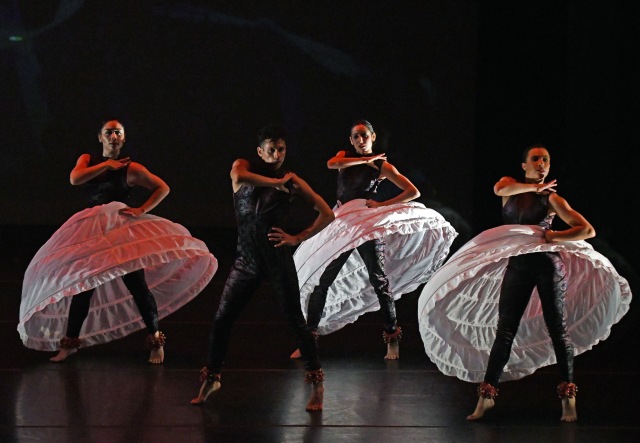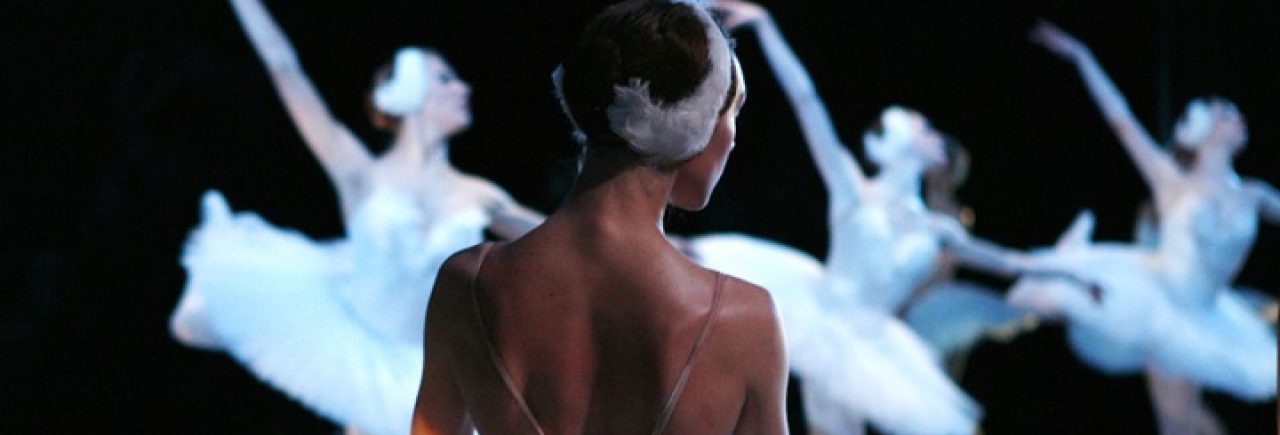
At any dance performance I attend, whatever the style, musical accompaniment or scenic elements, I most closely observe how the choreographer is talking to me through movement.
I don’t mean the dancers should literally speak up from the stage, with words. I mean the choices the choreographer makes with body placement and movement to communicate what she has on her mind. (I’m using the female pronouns, but I’m referring to everyone.)
Maybe she’s been thinking all about geometric shapes and lines. Perhaps she’s raging against an injustice in life. The dance could very well be a love story or overflowing with symmetrical and graceful steps put together because they make a beautiful picture. Whatever the intention, I try to take in all the gestural choices of the dance-maker. From the smallest finger flick to the biggest split-leap, I look for why. I may misunderstand her intention, and I accept that will happen; some choreographers don’t want you to know their intention because it’s the viewers’ interpretation that’s more important. And there are some choreographers whose final product masks a process that actually lies at the heart of the creative purpose (that’s how I think of William Forsythe’s post-neo-classicism). Still, I will look for the dancers to be the primary communication “tool” of a dance artwork.
You might think this is an obvious priority for the choreographers, too. But zeroing in on how your own movement “reads” is extremely challenging, I think. Every writer needs an unsparing (but diplomatic) editor and every choreographer needs a trust-worthy (and kindly) director. These helpers are hard to come by, and dance companies rarely have the time and money to add that extra layer of preparation.
In February I went to four dance concerts, each one quite different in style. All of those shows had some rewarding qualities. But I would say there was only one where the choreographer knew exactly what he (in this case) wanted to communicate – and managed to do just that.
That choreographer is Caleb Teicher, who is a tap-dancer-plus, a wiry, fluent mover who is as good at Lindy Hop and vernacular jazz as he is innovative as a tap dancer. In his show “More Forever,” he and his six dancers put on a lively conversation with solo pianist and composer Conrad Tao. (Presented by the Philharmonic Society at the Renee and Henry Segerstrom Concert Hall on Feb. 12)

Teicher and Tao were involved in a genuine, inspirational give and take, through melody and rhythm, sliding across the stage and running scales on the piano keys. Making it even more interesting, Teicher was doing sand dancing, throwing down sand and scraping and stroking it with his tap shoes. Every dancer at each entrance dropped a handful of sand onto the specially constructed stage, giving them a fresh plot to crunch into. The noises are different, more muted, than with regular tap dancing, but the possible rhythmic nuances seemed just as vast.
Dancers entered for solos or small-group numbers that highlighted their particular gifts and then exited, making for revolving rounds of prepared spontaneity. This matched well with Teicher’s desire to explore the passage of time (or, you could say, the sands of time….) and the reality that people we love come in and out of our lives.
Woosh, falls the sand, and then clackety-clack-scraaape go the legs, bodies and shoes. My favorite moments were when Teicher ran breakneck and then slid uncontrolled halfway across the stage. And when Jabu Graybeal embarked on a high-octane percussive solo; or a poignant duet in which the couple leaned their torsos into one another but kept their arts straight and hands in fists. Good stuff!
The men and women in Pam Tanowitz’s New York-based company are utterly inspiring, capable of her sharply precise and weirdly twisted body shapes. Tanowitz is a movement explorer and she strings gestures unexpectedly, like out-of-order word sentences; it’s a new language and yet still decipherable.
My problem with her evening-long “Four Quartets” was her use of T.S. Eliot’s extra-long poem of the same name – that proved to be a fundamental drawback for me. A “mysterious and beautiful masterpiece” (I’m quoting from the program), the four-part poem was read by veteran actor Kathleen Chalfant in a monotone that never varied in its sing-song rhythm. (Sunday, Feb. 16, presented by UCLA’s Center for the Art of Performance at Royce Hall) That monotone clashed mightily with the more nuanced and varying rhythmic structure of Tanowitz’s dance phrases: three-count skipping and big leaps, pauses and off-balance stasis. Then, add in the live incidental music played by a new-music quartet, The Knights, and the slowly shifting abstract backdrops by painter Brice Marden and you ended up with four unique elements, two of them fighting for attention.

My poor brain simply could not take in Eliot’s esoteric ramblings – oops, I mean, “mysterious and beautiful” – and at the same time digest Tanowitz’s movement metaphors. She did not try to illustrate Eliot’s dense text, thank goodness. But I would have preferred silence; it seemed the dancing was literally trapped by the words. End it now; OK, now; right here. Drat!
And while I try to separate the artist and his politics, by the end I found myself ruminating on Eliot’s anti-Semitism. I wish Tanowitz had found a suitable text she loved from a different author.
Up in the Bay Area, San Francisco Ballet brought back Christopher Wheeldon’s “Cinderella” this season. (I saw it Feb. 1.) First performed at the War Memorial Opera House in 2013, Wheeldon tweaks the Perrault fairy tale in ways that are both peculiar (the Fairy Godmother is replaced by, uh, a magical tree) and goofy (the Prince has a BFF named Benjamin, who falls in love with the be-spectacled Step-Sister). That magical tree and the carriage design, courtesy of Basil Twist, were gorgeous; the plain and unflattering costumes, from Julian Crouch, not so much.
The story clops along at a brisk pace, but Wheeldon had no sweet, poignant, or romantic ways to express this most iconic of love stories. Love at first sight went unrecorded through steps or gestures. The Prince and Cinderella each gave several pathetic little leg swings that communicated an “Aw, shucks,” kind of attraction. But the rest was vacant and bland. No buildup, no catharsis, no over-the-moon sentimentality.
Back in Los Angeles, I went with anticipation on Feb. 21 to the Wallis Annenberg Center, which presented Blue13 Dance Company on its dance season of Los Angeles-only groups. Artistic director and choreographer Achinta McDaniel pulls from her high-level training and experience as a classical Kathak dancer to meld that technique with modern dance, hip-hop and other techniques. The very enthusiastic group of dancers are game for anything, but they vary in ability. More troubling was a consistent sloppiness, positions missed, and major differences in quality of movement, which matters because McDaniel choreographs a lot of unison dancing. Each piece looked under-rehearsed.

It was just plain hard to decipher what McDaniel wanted to say, in particular “Terpsichore in Ghungroos,” one of two premieres. The women pulled at their white dresses in the first section of three sections. Hoop skirts were used to imprison one woman, while later, others wore them with spirited confidence or carried them around without consequence. Expressionistic poses suggested longing and distress; men hauled women around like giant sacks of flour, and there was an undertone of violence. There were extremes but no variety; exclamation points, but no guideposts.
There was one true moment: Words appeared on the backdrop proclaiming, “This is not what you think.” I’d have to agree with that.

I really really love your writing. What is with Wheeldon? So much of his earlier work was fabulous.
>